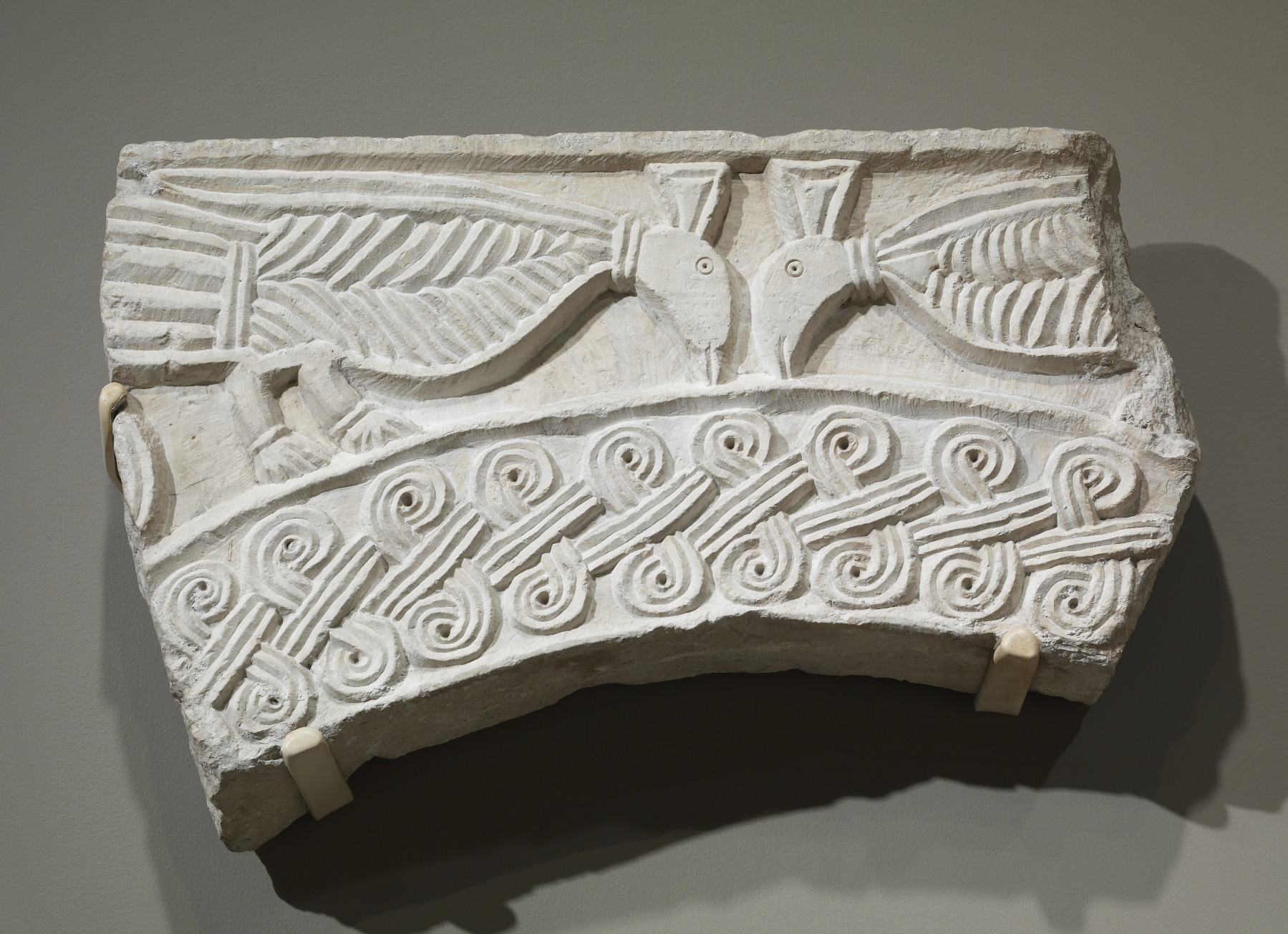Ciborium Fragment
(Medieval Europe )
This relief is a fragment of a ciborium, a free-standing stone canopy supported by columns, designed to cover the altar or baptismal font of a church. The relief shows two confronted peacocks, symbols of paradise and immortality in early Christian and Byzantine art, placed above an interlace border that once outlined the open arch of the ciborium. Relatively late in date, such architectural elements were carved after the Langobards had settled permanently in Italy.
Provenance
Provenance (from the French provenir, 'to come from/forth') is the chronology of the ownership, custody, or location of a historical object. Learn more about provenance at the Walters.
Christine Alexander (Mrs. Breckenridge Long), Rome and Laurel, Maryland [date of acquisition unknown], by purchase; Walters Art Museum, 1959, by bequest.
Geographies
Italy (Place of Origin)
Measurements
H: 16 1/16 x W: 23 13/16 x D: 3 15/16 in. (40.8 x 60.5 x 10 cm)
Credit Line
Bequest of Mrs. Breckenridge Long, 1959
Location in Museum
Centre Street: Third Floor: Migration and Early Medieval Art
Accession Number
In libraries, galleries, museums, and archives, an accession number is a unique identifier assigned to each object in the collection.
In libraries, galleries, museums, and archives, an accession number is a unique identifier assigned to each object in the collection.
27.563



